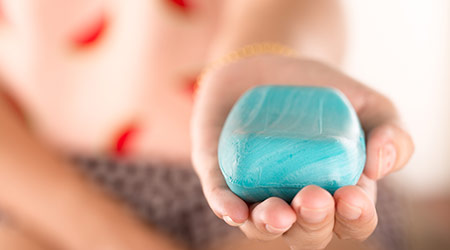
Is liquid soap safer than a bar?
The answer is no, according to a Q&A on The New York Times website
The answer is no, according to a Q&A on The New York Times website discussing whether bar soaps are more likely to spread germs in a public bathroom.
According to the article, the most rigorous study of this question was published in 1965.
Scientists conducted a series of experiments in which they intentionally contaminated their hands with about five billion bacteria.
The scientists then washed their hands with a bar of soap and had a second person wash with the same bar of soap. They found that bacteria were not transferred to the second user and concluded: “The level of bacteria that may occur on bar soap, even under extreme usage conditions (heavy usage, poorly designed non-drainable soap dishes, etc.) does not constitute a health hazard.”
A 1988 confirmed these findings. researchers inoculated bars of soap with E. coli and Pseudomonas bacteria and had 16 people wash their hands with the contaminated bars. After washing, none of the subjects had detectable levels of bacteria on their hands. The study concluded that “little hazard exists in routine hand washing with previously used soap bars.”
According to an article on the “How Stuff Works” website, there is no real difference between the two. All types of soap are composed of the same essential components — alkali salts of fatty acids and detergent properties.
July 2, 2018
Topic Area: Infection Control
Recent Posts
 UF Health Hospitals Rely on Green Globes to Realize Their Full Potential
UF Health Hospitals Rely on Green Globes to Realize Their Full Potential
Case study: The process encouraged the team to push themselves in several areas.
 How Healthcare Facilities Can Be Truly Disaster-Resilient
How Healthcare Facilities Can Be Truly Disaster-Resilient
Real resilience looks different than what’s written down in plans
 AI-Driven Facilities: Strategic Planning and Cost Management
AI-Driven Facilities: Strategic Planning and Cost Management
6 factors to ensure infrastructure, operations and financial management support AI’s integration
 TriasMD Breaks Ground on DISC Surgery Center for San Fernando Valley
TriasMD Breaks Ground on DISC Surgery Center for San Fernando Valley Bigfork Valley Hospital Falls Victim to Data Breach
Bigfork Valley Hospital Falls Victim to Data Breach